Dell Optiplex 5060 review: Dull yet dependable
This compact tower doesn’t need flashy features to be a reliable everyday work PC
While the Dell Optiplex 5060 doesn’t amaze with bombastic performance and hardware, it’s fast enough for most office work, and Intel Optane Memory gives the single hard disk a welcome boost.
-
+
Good CPU performance; Lots of ports; Upgradable despite small form factor
-
-
Low quality speaker; No SSD storage; Very basic peripherals
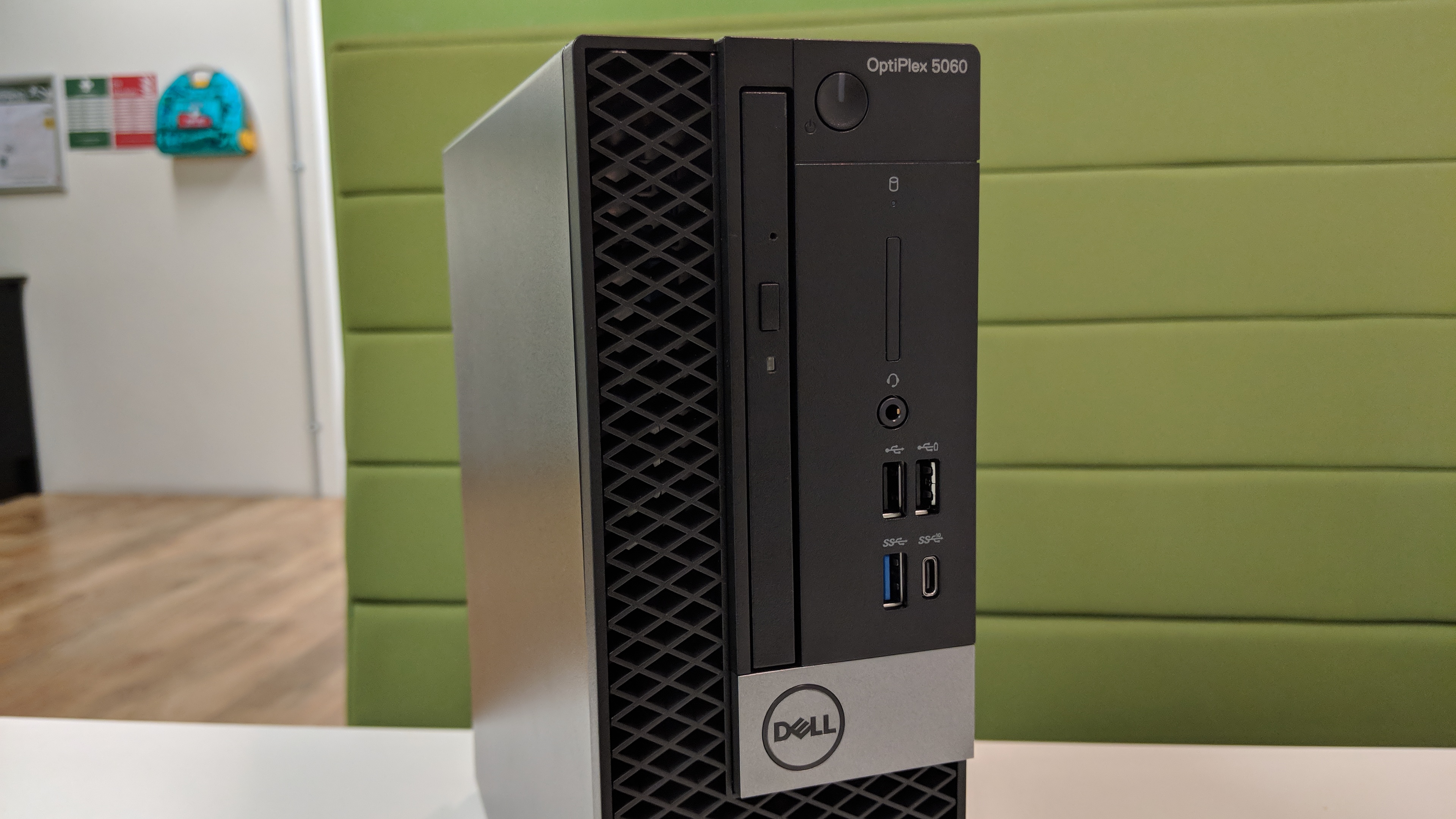
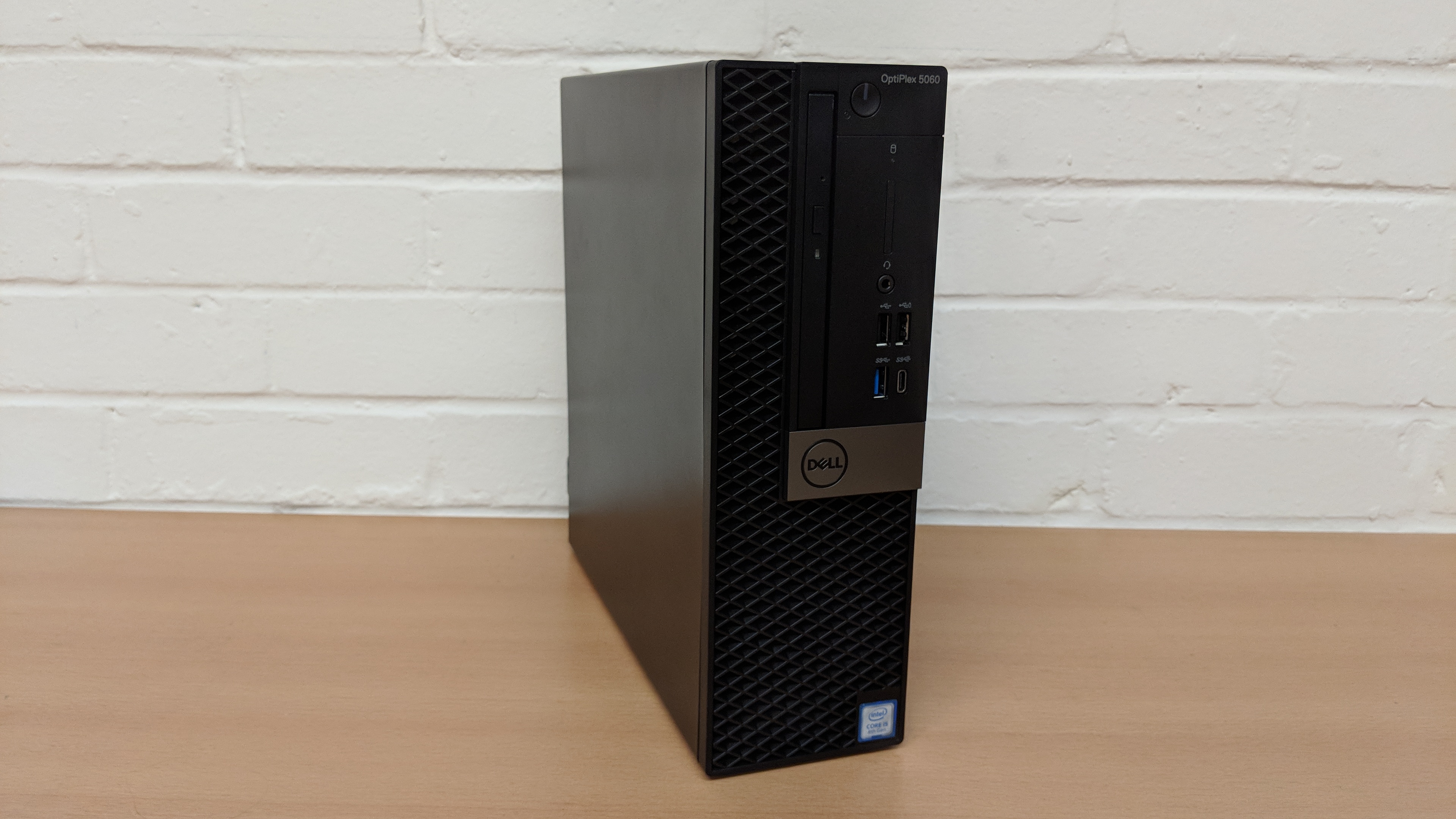
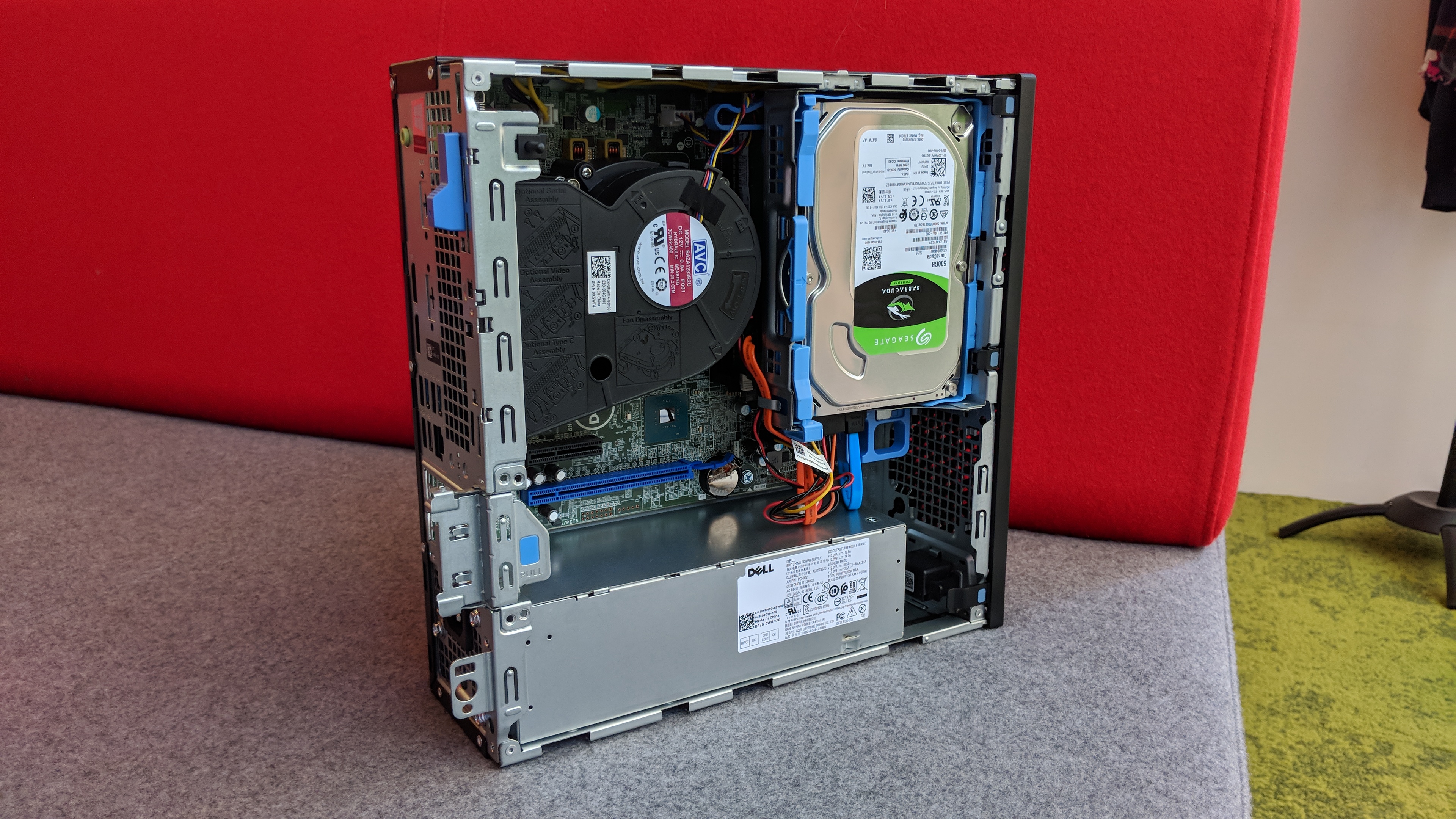
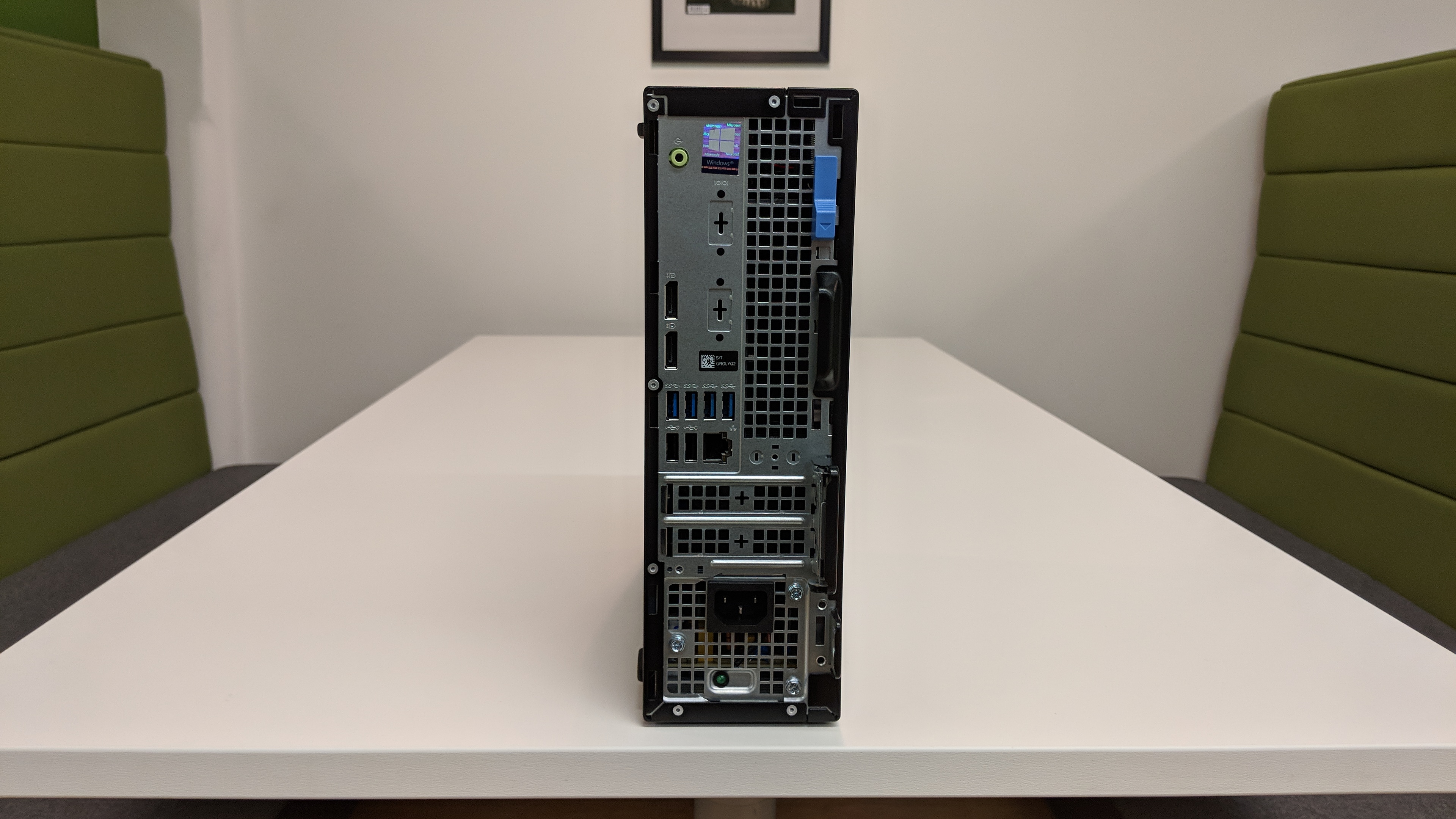
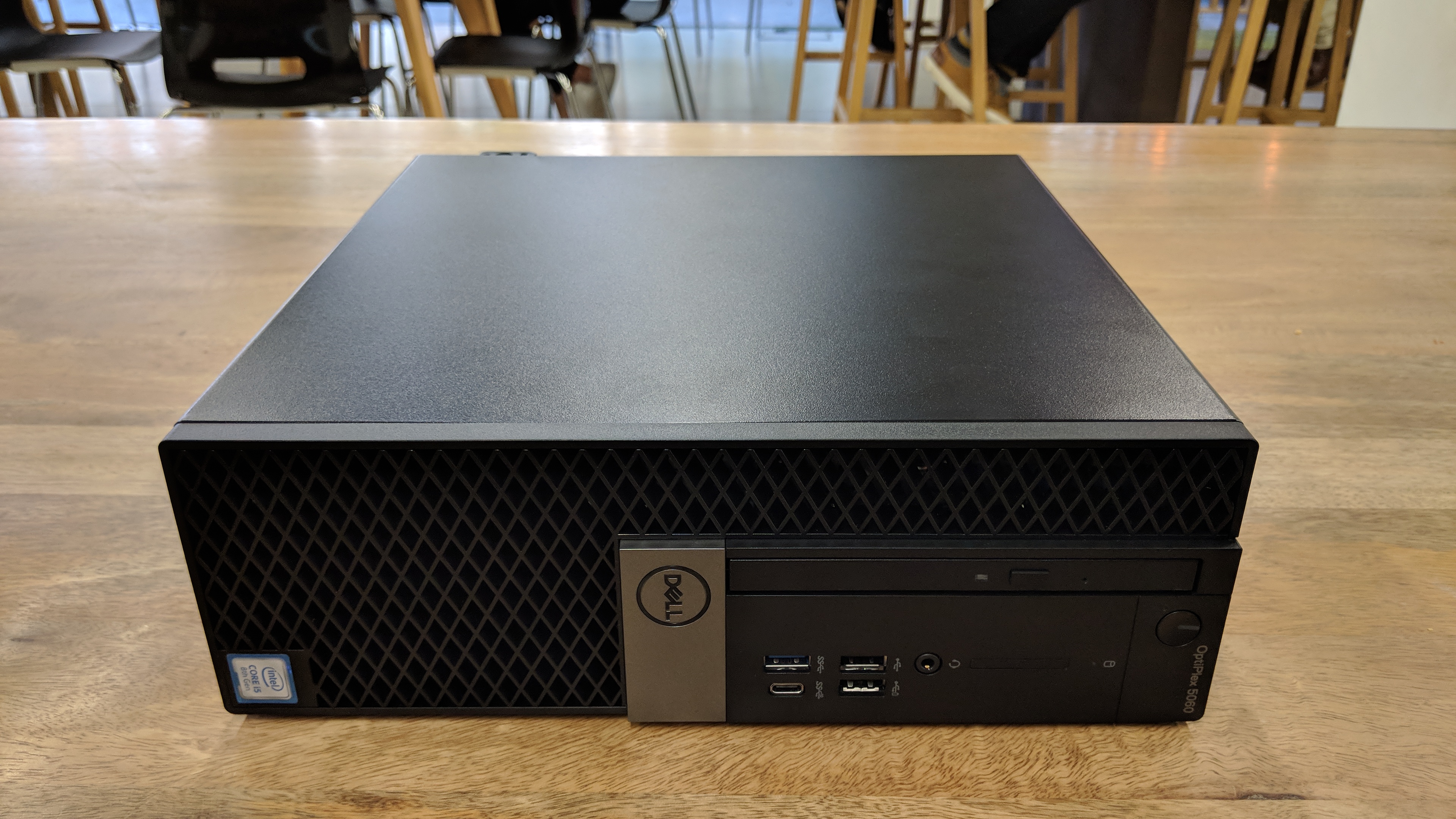
Boxy and industrial, Dell's Optiplex PCs are among the most archetypal office desktops imaginable. Still, if the Optiplex 5060 is any indication, this willingness to be a no-frills, mass-deployed system allows it to focus on polishing the basics.
We're testing the 'small form factor' version here; there's also a larger towel model and an even tinier 5060 Micro variant, though the latter seems to sacrifice connectivity as well as rely on lower-power Intel T-series chips. This SFF model, then, seems to offer the most attractive balance between functionality and slimness.
Dell Optiplex 5060 review: Design
Slim it most certainly is: the Optiplex 5060 measures just 93mm wide, as well as 292mm tall and 290mm deep, so it's easy to tuck away. Dell itself produces a fairly hideous monitor stand with a built-in mount for this and other Optiplex PCs of similar dimensions, but since it has a set of rubber feet on the right side panel as well as on the underside, it's fine to simply lay on its side and perch a monitor on top.
Aesthetically, it's as bland as they come, but looks have never been a major concern of Dell's business PCs. At least it's smart enough to have the majority of the front panel covered in holes - this provides some much-needed ventilation, as one downside of the small chassis is less room for the internals to breathe. In a similar vein, the CPU cooler is enclosed, so the resulting hot air is directed directly out the back - another wise move.

IT departments will also appreciate how easy the Optiplex 5060 is to open up, only requiring a flick of a tool-less switch at the back. Once this is done, the front panel also pulls away with the unlatching of a few tabs, so getting in to tinker with the components is relatively painless for a SFF design.
Dell Optiplex 5060 review: Hardware and performance
Our review unit includes a hexa-core Intel Core i5-8500, running at 3GHz with a 4.1GHz boost clock, plus 8GB of DDR4 RAM. 4GB versions are also available, though every other spec seems consistent in having the i5-8500 as the CPU of choice.
That's a good call, as this is an impressively powerful chip by mid-range standards: in Geekbench 4, for example, it propelled the Optiplex 5060 to 5,018 in the single-core test and 19,383 in the multicore test. Switching to our own 4K benchmarks, it scored 111 in the image test - which is only decent, rather than great - but its video test score of 173 and multitasking test score of 160 show the value of Intel adding two extra cores to its 8th-gen Core i5 parts. Overall, the system scored 156, which about what you'd get from a Core i7-7700 system.
True, more recent Core i7 and AMD Ryzen chips will stomp the i5-8500 in the very heaviest multithreaded workloads. Nonetheless, the Optiplex 5060 occupies a perfectly sensible middle ground, where less demanding software is preferable but can run much more smoothly than on a lower-end PC.
Dell Optiplex 5060 review: Storage
We'd normally be quite skeptical of a PC which only has a 500GB hard disk as its primary storage drive; the low transfer speeds of mechanical drives is usually made up for by higher capacity, but 500GB is among the smallest 3.5in HDD sizes. While, unfortunately, the only ways to upgrade capacity are to replace the drive completely or simply buy a different spec, this particular Optiplex 5060 aims to tackle the speed issue with Intel Optane Memory.

Mounted in the motherboard's M.2 slot, the Optane drive effectively accelerates the hard disk's read speeds, allowing it to boot faster and load software quicker. In fact, our AS SSD benchmark results put the accelerated hard disk as faster than a SATA-based SSD, with a sequential read speed of 859.6MB/sec.
The bad news is that if Optane has an effect on write speeds, it's practically invisible: in the same AS SSD test, we only recorded a sequential write speed of 77.9MB/sec, which is more like what we'd expect from a standalone hard disk. Still, faster read speeds will more commonly produce smoother-feeling results - it's just hard not to wish that M.2 slot was filled with a proper SSD instead, with it as the master Windows drive and the 500GB acting as spare space.
Dell Optiplex 5060 review: Ports and features
Along with the CPU and compact design, another example of Dell nailing the fundamentals is the Optiplex 5060's abundance of USB ports. The front panel alone has two USB 2 ports, a faster USB 3 port and a reversible USB Type-C port, while the rear I/O panel contributes a further two USB 2 and four USB 3 ports. For such a compact PC, that's pretty generous.
There are only two DisplayPort outputs for video - no HDMI - but that's enough for multiple monitors, and some extra flexibility comes from the slimline DVD R/W drive at the front. Our model also has a covered-up SD card slot - it appears this is an optional add-on, rather than included as standard.
Speaking of adding things, there's more scope for internal upgrades than we're using to seeing from SFF PCs. Empty PCI-E x4 and x16 slots allow for the addition of Wi-Fi, sound or graphics cards, provided they're low-profile and SFF-compatible, and only two of four RAM slots are filled; if more memory is required, up to 64GB can be installed. The only major limitation is the single 3.5in drive bay - this means, as mentioned, that you can't simply add a second hard disk.

The other extra features are decent if you're working to a tight budget, but are worth upgrading. The integrated speaker, while potentially a helpful inclusion, sounds too hollow and tinny to use in favour of a headset, and the bundled mouse and keyboard (both wired) are unsurprisingly cheap and plasticky.
Dell Optiplex 5060 review: Verdict
The PC itself, however, will serve well for general purpose office duties. Its hexa-core processor ensures smooth multitasking, it sits unobtrusively on any desk, and even the modest hard disk capacity - one of the few things we're not entirely sold on - should be enough for anyone who spends more time in a browser or word processor than media editing software. Indeed, anyone who works with lots of image and video files would be better served with a different, more powerful PC altogether. For everyone else, this will do the job just fine.
| CPU | Hexa-core Intel Core i5-8500, 3GHz |
| GPU | Intel UHD Graphics 630 |
| RAM | 8GB |
| Display | None |
| Ports | 4x USB 2, 5x USB 3, 1x USB Type-C |
| Dimensions | 292x93x290mm (HWD) |
| Weight | 5.26kg |
Get the ITPro daily newsletter
Sign up today and you will receive a free copy of our Future Focus 2025 report - the leading guidance on AI, cybersecurity and other IT challenges as per 700+ senior executives
-
 Cleo attack victim list grows as Hertz confirms customer data stolen – and security experts say it won't be the last
Cleo attack victim list grows as Hertz confirms customer data stolen – and security experts say it won't be the lastNews Hertz has confirmed it suffered a data breach as a result of the Cleo zero-day vulnerability in late 2024, with the car rental giant warning that customer data was stolen.
By Ross Kelly Published
-
 Women show more team spirit when it comes to cybersecurity, yet they're still missing out on opportunities
Women show more team spirit when it comes to cybersecurity, yet they're still missing out on opportunitiesNews While they're more likely to believe that responsibility should be shared, women are less likely to get the necessary training
By Emma Woollacott Published
-
 OpenAI wants developers using its new GPT-4.1 models – but how do they compare to Claude and Gemini on coding tasks?
OpenAI wants developers using its new GPT-4.1 models – but how do they compare to Claude and Gemini on coding tasks?News OpenAI says its GPT-4.1 model family offers sizable improvements for coding, but tests show competitors still outperform it in key areas.
By Ross Kelly Published